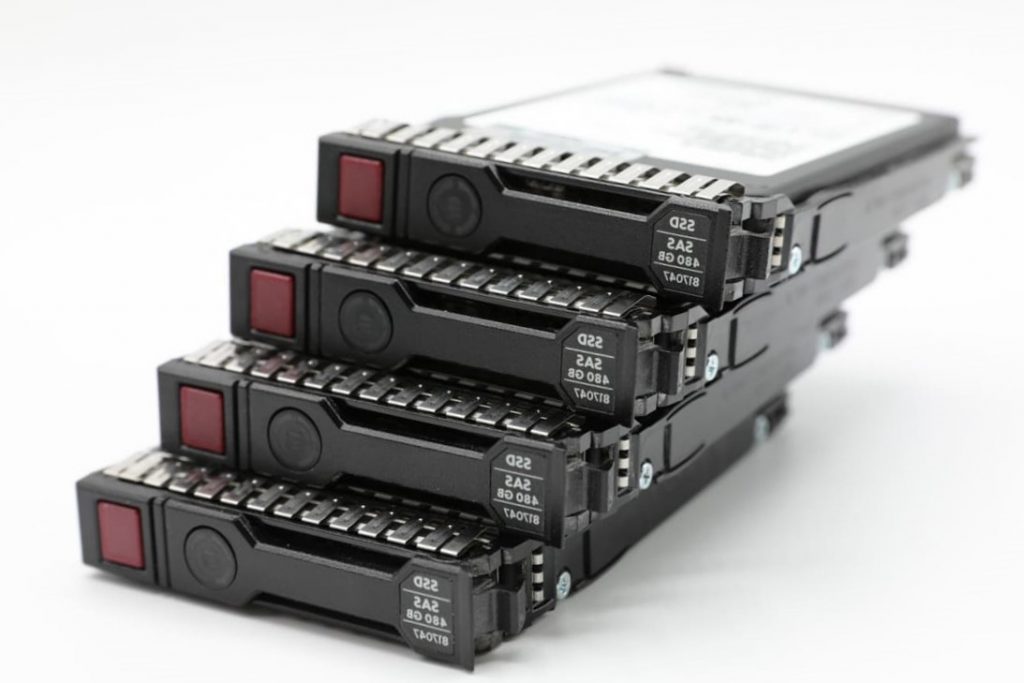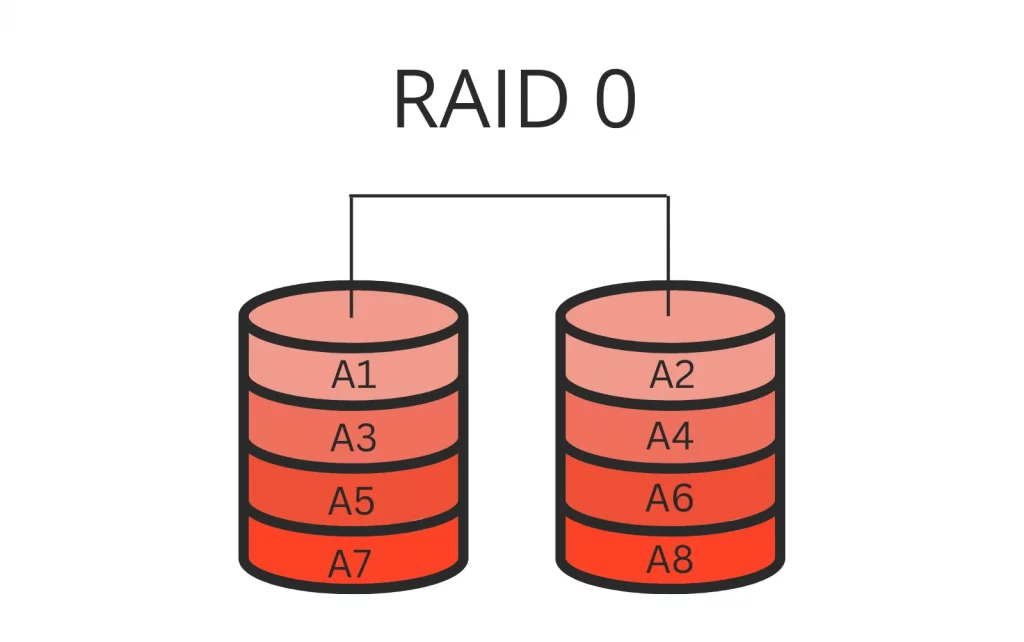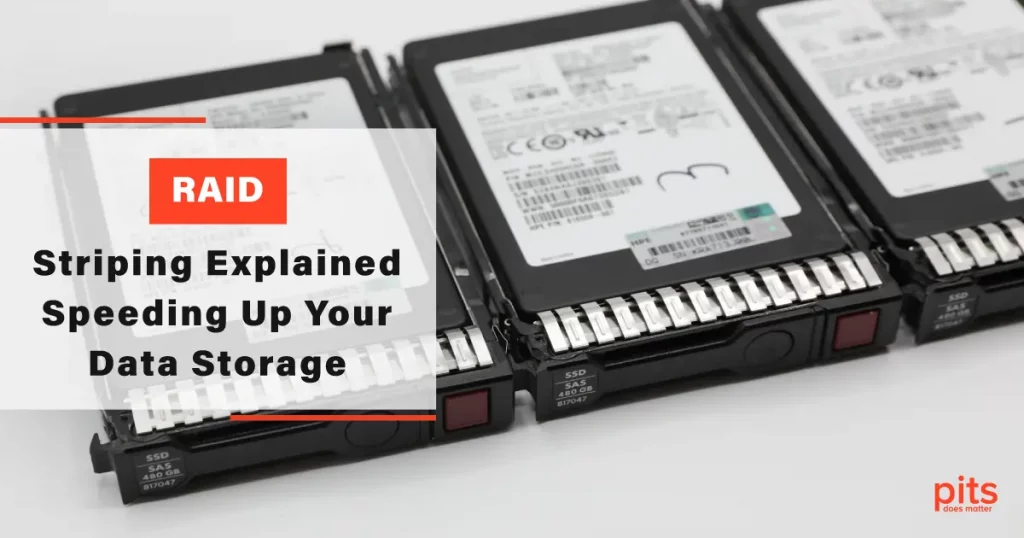RAID, or Redundant Array of Independent Disks, is a technology that revolutionizes data storage by offering performance, redundancy, and reliability. Within the realm of RAID configurations, one of the fundamental concepts that play a crucial role is “RAID striping.”
In today’s blog, we will solve the concept of RAID striping, its importance, and how it enhances your data storage solutions. So, let’s dive right into the world of RAID striping and understand what makes it a vital component of modern data storage strategies.
What is Striping in RAID
RAID is a group of multiple disks, each with a specific role in storing data. The disks contain a set number of consecutively addressable disk blocks, called “strips,” which are the fundamental components of RAID striping.
Think of the hard disk as a canvas decorated with multiple addressable blocks stacked together in a cohesive strip, representing fragments of your data. Strips meticulously arrange these fragments for efficient management.
Efficient Data Synchronization Across Multiple Disks
Data Striping in RAID, distributing data carefully across several hard drives within an array ensures efficient data synchronization. This process organizes data in a way that allows for smooth and coordinated access.
It’s similar to managing a library of books where each book represents a portion of the data and placing them well-structured on different shelves. When the system needs to retrieve or store data, it can access multiple drives in unison, significantly speeding up the process.

Turbocharged Performance
RAID striping divides data into smaller blocks or strips and assigns each strip to a specific drive to optimize performance. This division enables the system to access multiple drives simultaneously when reading or writing data, resulting in substantially improved read and write speeds that make data operations faster and more responsive. It’s like a well-coordinated team of individuals working together to complete a task swiftly and efficiently.
Foundational Fault Tolerance
RAID striping enhances performance and provides a basic level of fault tolerance. If a drive fails in a striped array, the specific drive’s data may be at risk. Nevertheless, the remaining drives retain their data and remain unaffected and intact. This basic redundancy acts as a safety net, ensuring that your data remains available and secure to some extent, even if hardware failures occur.
Which Type of RAID is also Known as Disk Striping
Now that we’ve grasped the foundational vision of disk striping in RAID let’s explore which specific RAID types are closely associated with this method, usually recognized as “disk striping.”
Regarding RAID configurations, RAID 0 stands as the embodiment of disk striping. RAID 0 striping, occasionally referred to as “striping without parity,” is designed with a singular focus: optimizing performance through the art of striping.

RAID 0 Striping
RAID 0 disk striping fragments the data into blocks or strips and distributes them evenly across multiple drives within the array. The array reads or writes these portions in parallel as each drive receives a part of the data.
This orchestration delivers a significant performance boost, as the array can utilize the combined speed of all its drives.
It’s crucial to understand that RAID 0 lacks redundancy or fault tolerance. If one of the drives in a RAID 0 configuration fails, the entire array becomes vulnerable, with a significant risk of data loss. As a result, while RAID 0 is the most efficient form of disk striping, it should only be used in situations where performance is paramount, and data redundancy is ensured through other means, such as regular backups.
The fundamental idea behind RAID 0 is to use disk striping to achieve exceptional speed, making it a beneficial member of the RAID family for certain scenarios.
However, it is important to note that Striped RAID alone is insufficient to ensure data protection and that mirroring and parity are necessary. If you want to keep your valuable information safe, especially in the event of RAID disk failures, it is wise to seek the help of data recovery experts. PITS Global Data Recovery Services is available to help your critical data be secure and recoverable, bridging the gap between performance optimization and data resilience in your storage solutions.
Frequently Asked Questions
Why is RAID 0 called striping?
The process of dividing data into strips or blocks and writing it to separate drives is known as “striping,” and it is what RAID 0 does. By distributing data across multiple drives, this technique enhances data access speed and performance.
Which RAID types have striping?
Striping is the only technique employed by RAID 0 while other RAID levels like RAID 1, RAID 5, and RAID 6 include supplementary methods such as mirroring and parity to ensure data redundancy and fault tolerance.
What is the difference between RAID mirroring and striping?
Ensuring data integrity in case of drive failure, RAID mirroring (RAID 1) involves duplicating data across two or more drives for redundancy. On the other hand, RAID striping (RAID 0) focuses on performance optimization by distributing data in smaller blocks or strips across multiple drives. While data protection is offered by mirroring, striping primarily enhances speed.
What is a strip in RAID?
RAID distributes and stores a predefined data segment, known as a strip, across multiple drives in an array. Striping RAID configurations use these strips as the basic units for data distribution, enhancing data access speed and performance.
